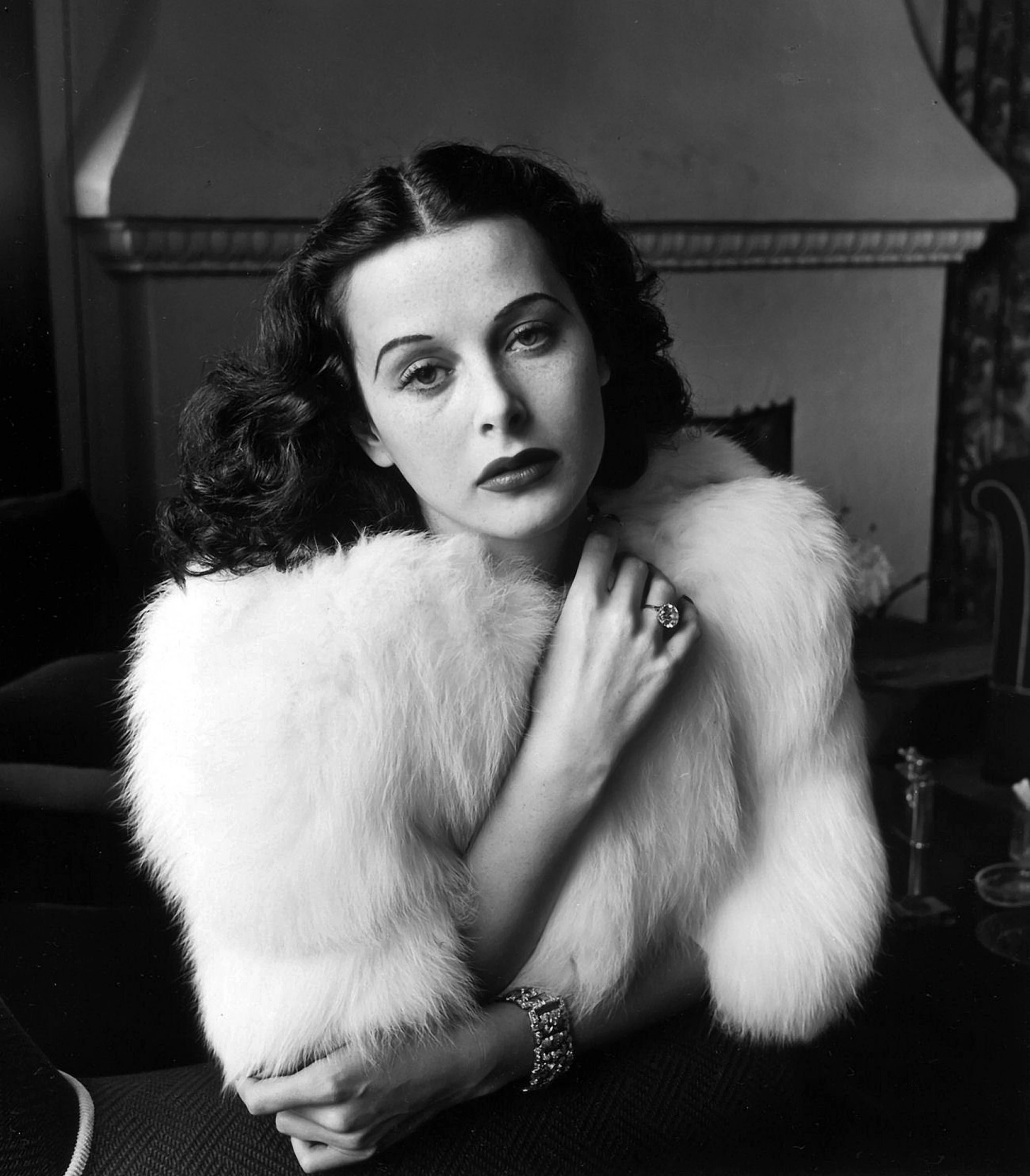Hedy Lamarr (1914-2000) Actress.
Hedy Lamarr
Public Domain
Hedwig Eva Maria Kiesler was born as an only child into a wealthy assimilated Viennese Jewish family during the early months of World War I. Her father Emil was a director of Austria-Hungary’s largest bank, the Creditanstalt-Bankverein (married 6 times, she later called her father “the most important man in my life”).
Her mother, a homemaker, was an accomplished pianist. She left school when she was almost sixteen, after she had appeared in her first movie and pursued a full-time career as an actress. Supported by the great theater impresario Max Reinhard (he called her “the most beautiful girl in the world”) she performed in theaters in Berlin and Vienna and also appeared in four more films. He first major role was in the Czechoslovak film Ecstasy (1933). There was a scandalous nude scene in the film – a fact Hollywood later on tried to forget.
In 1933 she married for the first time the wealthy munitions manufacturer and arms dealer Fritz Mandl. When he locked her up in his beautiful estates like a prized diva, she fled him in 1937 to launch a film career in Hollywood. As she later put it: “It was his game to keep me a prisoner. It was my game to escape. He lost” (Lady Bluetooth, p. 87).
Louis B. Mayer of Metro-Goldwyn-Mayer (MGM) gave her a contract and refashioned her into the glamorous phantasy product Hedy Lamarr. Starting with Algiers (1938), MGM restyled her into “the most beautiful woman in the world.” Never having studied acting and still learning English, she was cast as a bejeweled, elegant lady in a number of movies throughout World War II. She became part of “Hollywood’s star community,” remarried an had two children. Motherhood led to a decline in her career. In 1949 she starred in Cecil B. DeMille’s blockbuster Samson and Delilah, which brought her to the pinnacle of her film career. Subsequently, trying a new role as film producer led her on a downward track.
What has rekindled her reputation lately – and become her legacy -- was her career as a smart amateur inventor during World War II (also called an “inventive Venus”, see Lady Bluetooth, p. 126). She invented practical aids and advanced weapons systems. Together with the avant-garde composer George Antheil (both of them rabid anti-Nazis) she invented a remote control system for torpedoes. “The underlying frequency-hopping process is regarded today as the forerunner of wireless technologies such as Bluetooth and mobile telephony” (Lady Bluetooth, p. 47).
A recent exhibition (and catalogue) at the Jewish Museum in Vienna presented her as “Lady Bluetooth,” stressing equally both her careers as actress and inventor. She also travelled the U.S. as a film star during the war selling war bonds for the U.S. government and entertaining soldiers. Late in her life she was recognized as an ingenious inventor and received awards.
She finally became a U.S. citizen in 1953. After her career as a film diva she became a recluse and lived in New York City and finally in Florida; first in Miami and then in Orlando, where she died in 2000. Even though she considered herself “always Viennese,” she only returned to Austria once in 1955. She is buried in an honorary grave in Vienna’s Central Cemetery.
Sources:
Andrea Winkelbauer/Jewish Museum Vienna, ed. Lady Bluetooth: Hedy Lamarr. Vienna: Jewish Museum, 2019
Michaela Lindinger. Hedy Lamarr: Filmgöttin, Antifaschistin, Erfinderin. Die Biograhie. Vienna-Graz: Molden, 2019
